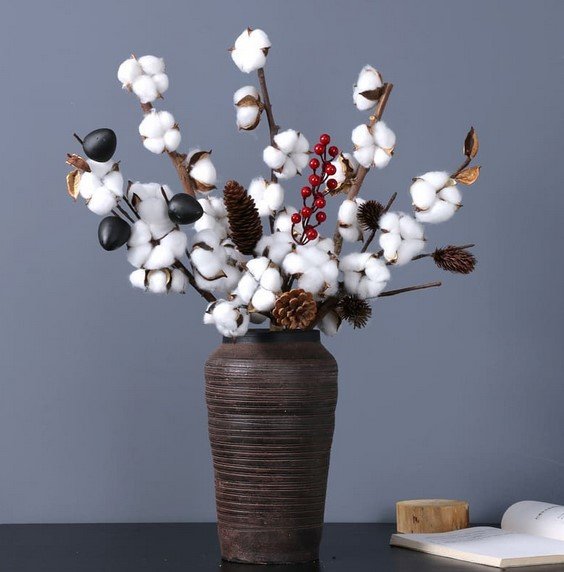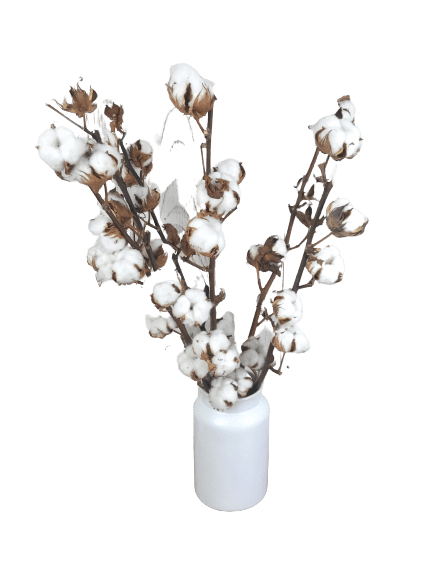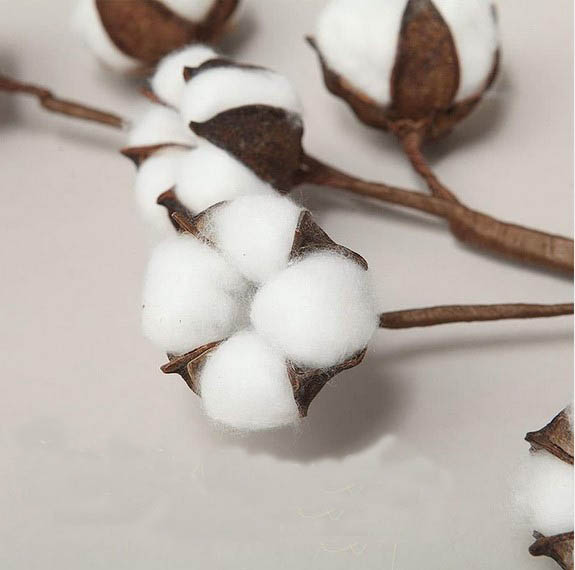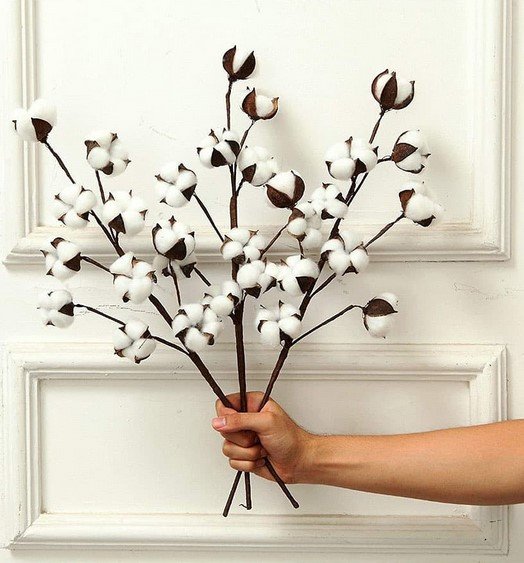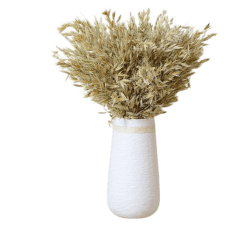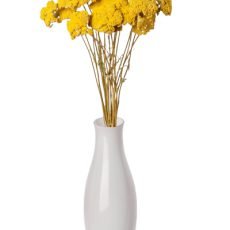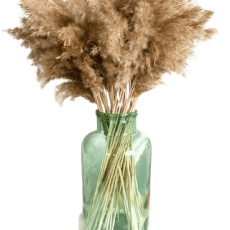Description
Dried cotton flower
Dried cotton flower : Cotton is the collective name given to four species of plants in the genus Gossypium, Gossypium hirsutum, Gossypium barbadense, Gossypium arboreum and Gossypium herbaceum which are perennial shrubs in the family Malvaceae grown for the fluffy fiber which protects the seeds of the plant. G. hirsutum accounts for approximately 90% of world wide cotton production today. Cotton plants possess a main stem giving rise to several branches at the top.
The leaves of the plant are spirally arranged on the branches, have long petioles and have 3–5 triangular lobes. The plant produces a single flower on each axillary branch which can be red-purple, yellow or white in color and forms a leathery, oval seed capsule, or ‘boll’ which is 2–6 cm (0.8–2.4 in) long. Mature bolls will usually split open to reveal the characteristic white cotton fibers and the seed.
The cotton plant can reach heights of 1–1.5 m (3.3–4.9 ft) and is usually cultivated as an annual, surviving only one growing season. Cotton may also be referred to as tree cotton and its center of origin is unknown although the plant has diversified from Mexico, north-east Africa and Arabia and Australia. for more information please read Iran Cotton plant specification .
Cotton flower specifications
- Scientific name : Gossypium
- Order : Malvales
- Family : Malvaceae
- Subfamily : Malvoideae
- Tribe : Gossypieae
- Genus : Gossypium
Types of cotton flowers
There are four commercially grown species of cotton, all domesticated in antiquity :
- Gossypium hirsutum – upland cotton, native to Central America, Mexico, the Caribbean and southern Florida (90% of world production)
- Gossypium barbadense – known as extra-long staple cotton, native to tropical South America (8% of world production)
- Gossypium arboreum – tree cotton, native to India and Pakistan (less than 2%)
- Gossypium herbaceum – Levant cotton, native to southern Africa and the Arabian Peninsula (less than 2%)
Hybrid varieties are also cultivated.[3] The two New World cotton species account for the vast majority of modern cotton production, but the two Old World species were widely used before the 1900s. While cotton fibers occur naturally in colors of white, brown, pink and green, fears of contaminating the genetics of white cotton have led many cotton-growing locations to ban the growing of colored cotton varieties.
Color :
Natural color
Specification :
size :
Minimum quantity of order (MOQ) :
Title of all kinds of dried cotton flower decors :

